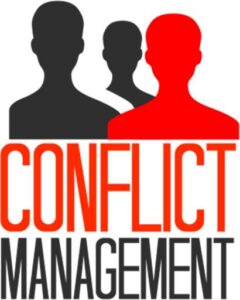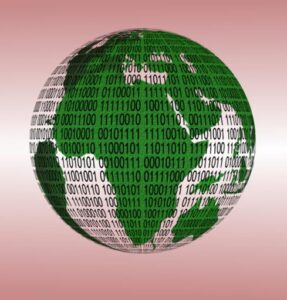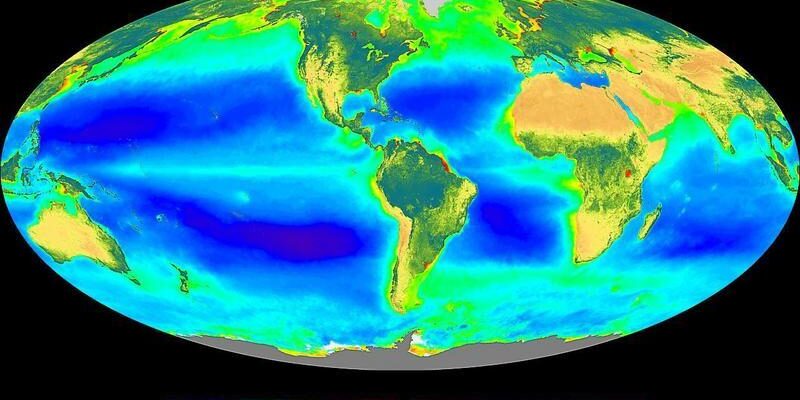How we walk, where we walk, that we walk-on, all matter.
The world is increasingly globalizing. In 2019, the number of human migrants (people living outside of the country of their birth) had reached 272 million. That is 3.5 percent of the global population (United Nations Department of Economic and Social Affairs, 2019). The good news is that representatives from most of the “hard to reach” people groups are now in countries where the gospel is readily available.
 And, missionary teams are increasingly becoming multi-national and multi-cultural. However, not all is well in the missions enterprise. More often than not, the diversity in missionary teams has caused difficulties that break them apart. Missions leaders are quick to blame this on differences in the team members’ cultures, but culture, as a whole, is changing, too.
And, missionary teams are increasingly becoming multi-national and multi-cultural. However, not all is well in the missions enterprise. More often than not, the diversity in missionary teams has caused difficulties that break them apart. Missions leaders are quick to blame this on differences in the team members’ cultures, but culture, as a whole, is changing, too.
 With the growth of the internet and easy accessibility through mobile technology, 1 percent of the population can create a movement that can change the world (Penn, 2007, p. xiv). 3.5 percent of the global population that is on the move is changing cultures everywhere. Europe is host to 82 million migrants. That’s roughly 11 percent of their total population. Fifty-nine million migrants make up about 10 percent of the people of North America.[1]
With the growth of the internet and easy accessibility through mobile technology, 1 percent of the population can create a movement that can change the world (Penn, 2007, p. xiv). 3.5 percent of the global population that is on the move is changing cultures everywhere. Europe is host to 82 million migrants. That’s roughly 11 percent of their total population. Fifty-nine million migrants make up about 10 percent of the people of North America.[1]
How does a missions leader function, let alone lead in such complexity? Add to this the “Big Brother” states’ surveillance systems, and we have a mass expulsion of missionaries from countries with a significant number of Unreached peoples.[2] They must “walk on” (Eckel, 2014).
 Walking with, in, before, and after, God points to a right relationship with Him in both the Old and the New Testaments. Walking with God suggests an intimate relationship with the Creator (Eckel, 2014 Kindle location, 2080). Patriarchs Abraham and Isaac walked before God, and kings David and Josiah followed after God (Kindle location 2094). The Hebrew word “derek” is used twenty-five times in the first nine chapters of Proverbs. It is translated as “way,” “path,” or “road” (Longman, 2002, p. 25). What path we walk determines our relationships with God. Walking in the “good” path leads to God, for God is Good,[3] and His works are good.[4] On the contrary, walking in the “derek“[5] of sinners or the wicked leads to evil and death (Psalm 1). We know this. The missionaries know this. But like Robert Robinson, the author of the hymn, “Come, Thou Fount of Every Blessing,” we are “prone to wander” (Kindle location 2160).
Walking with, in, before, and after, God points to a right relationship with Him in both the Old and the New Testaments. Walking with God suggests an intimate relationship with the Creator (Eckel, 2014 Kindle location, 2080). Patriarchs Abraham and Isaac walked before God, and kings David and Josiah followed after God (Kindle location 2094). The Hebrew word “derek” is used twenty-five times in the first nine chapters of Proverbs. It is translated as “way,” “path,” or “road” (Longman, 2002, p. 25). What path we walk determines our relationships with God. Walking in the “good” path leads to God, for God is Good,[3] and His works are good.[4] On the contrary, walking in the “derek“[5] of sinners or the wicked leads to evil and death (Psalm 1). We know this. The missionaries know this. But like Robert Robinson, the author of the hymn, “Come, Thou Fount of Every Blessing,” we are “prone to wander” (Kindle location 2160).
 In the crisis moments, when the missionary team is falling apart, it is easy to forget the purpose for which the team came together. The temptation to wander from the path is constant. Fingers point to the sins of others. Ethnocentrism rears its ugly head. Teams gather not to pray but to make their opinions known. The Bible is misquoted. “Experts” are called in to help resolve the conflict. The shame that Adam and Eve felt when they heard God walking in the Garden (Genesis 3:8) is too often replaced with indignation. “God, can’t you see that I am right, and they are wrong? Do something about it!” We command. Or is that our prayer?
In the crisis moments, when the missionary team is falling apart, it is easy to forget the purpose for which the team came together. The temptation to wander from the path is constant. Fingers point to the sins of others. Ethnocentrism rears its ugly head. Teams gather not to pray but to make their opinions known. The Bible is misquoted. “Experts” are called in to help resolve the conflict. The shame that Adam and Eve felt when they heard God walking in the Garden (Genesis 3:8) is too often replaced with indignation. “God, can’t you see that I am right, and they are wrong? Do something about it!” We command. Or is that our prayer?
 3.5 percent of the world’s population is changing the cultures of the world. The missionaries are counted among them. What is the path that the missionary teams are paving? What path will the 10 to 12 percent of the population of North America who are migrants walk? Does the world see the Christian church as the “right path” to follow? We no longer have a good reputation. A study conducted by the Pew Research Center showed warm feelings went up for every major religion except for Evangelical Christianity between 2014 to 2017 (Pew Research Center, 2017). It will be interesting to see how that’s changed. My guess is that we are not doing better. So, how do we show the world the right path, the path of Jesus? We walk on.
3.5 percent of the world’s population is changing the cultures of the world. The missionaries are counted among them. What is the path that the missionary teams are paving? What path will the 10 to 12 percent of the population of North America who are migrants walk? Does the world see the Christian church as the “right path” to follow? We no longer have a good reputation. A study conducted by the Pew Research Center showed warm feelings went up for every major religion except for Evangelical Christianity between 2014 to 2017 (Pew Research Center, 2017). It will be interesting to see how that’s changed. My guess is that we are not doing better. So, how do we show the world the right path, the path of Jesus? We walk on.
Aung San Suu Kyi, the Burmese activist, “walked on” in the face of government soldiers leveling  automatic weapons (Kindle location 2195). Martin Luther King, Jr. “walked on” peaceably while the White establishment threw violence against the Civil Rights movement. Like so many courageous leaders of the past, the missionary leaders and the evangelical Christian leaders in North America must walk on. We need to walk on the right path.
automatic weapons (Kindle location 2195). Martin Luther King, Jr. “walked on” peaceably while the White establishment threw violence against the Civil Rights movement. Like so many courageous leaders of the past, the missionary leaders and the evangelical Christian leaders in North America must walk on. We need to walk on the right path.
 Contributor: James Kim. James immigrated to the U.S. from South Korea at the age of thirteen. He is a graduate of University of Maryland (1988 – B.A. Government and Politics) and Reformed Theological Seminary (2011 – MDiv). During his senior year at U. of M., James started a small business in Baltimore, Maryland and operated it until 1996. Sensing a call to reach the Unreached, James joined Pioneers in 1996 to mobilize missionaries. James served with Pioneers USA as the Vice-President of Mobilization from 2003-2011, overseeing mobilization of missionaries to the Unreached while also pastoring a church in Orlando, Florida. From 2012 to 2018, he served as the Executive Director of Pioneers Canada. Currently, James serves as the Regional Mobilizer for Mid-Atlantic States. James has served as an Adjunct Faculty Professor at Heritage Bible College and Seminary, lecturing on Missions Strategies.
Contributor: James Kim. James immigrated to the U.S. from South Korea at the age of thirteen. He is a graduate of University of Maryland (1988 – B.A. Government and Politics) and Reformed Theological Seminary (2011 – MDiv). During his senior year at U. of M., James started a small business in Baltimore, Maryland and operated it until 1996. Sensing a call to reach the Unreached, James joined Pioneers in 1996 to mobilize missionaries. James served with Pioneers USA as the Vice-President of Mobilization from 2003-2011, overseeing mobilization of missionaries to the Unreached while also pastoring a church in Orlando, Florida. From 2012 to 2018, he served as the Executive Director of Pioneers Canada. Currently, James serves as the Regional Mobilizer for Mid-Atlantic States. James has served as an Adjunct Faculty Professor at Heritage Bible College and Seminary, lecturing on Missions Strategies.
[1] There are 23 independent countries in North America. The total population of North America was 579 million in 2016, according to Google. However, U.S., Mexico, and Canada, make ups roughly 490 million people. When we consider that most of the 59 million migrants live in those three countries, migrants make up about 12 percent of U.S., Mexico, and Canada.
[2] From 2018-2019, a significant number of missionaries from an agency were expelled from an Asian country. There has also been a trend of missionaries to other countries being denied visas back into the country that they are serving in when they left for short visits outside.
[3] Mark, in his Gospel quotes Jesus, “No one is good except God alone” (10:18).
[4] Genesis 1:4, 10, 12, 18, 21, 25, 31.
[5] Translated “way” or “path,” in Psalm 1:1, depending on the translation.
SOURCES
Eckel, M. D. (2014). I Just Need Time to Think!: Reflective Study as Christian Practice. Bloomington: WestBow Press.
Longman, T. (2002). How to Read Proverbs. Downers Grove: IVP Academic.
Penn, M. J. (2007). Microtrends: The Small Forces Behind Tomorrow’s Big Changes. New York: Twelve.
Pew Research Center. (2017, February 15). Americans Express Increasingly Warm Feelings Toward Religious Groups. Retrieved from Pew Research Center: https://www.pewforum.org/2017/02/15/americans-express-increasingly-warm-feelings-toward-religious-groups/
United Nations Department of Economic and Social Affairs. (2019, September 17). The number of international migrants reaches 272 million, continuing an upward trend in all world regions, says UN. Retrieved from United Nations: https://www.un.org/development/desa/en/news/population/international-migrant-stock-2019.html#:~:text=The%20number%20of%20international%20migrants%20globally%20reached%20an%20estimated%20272,by%20the%20United%20Nations%20today.


